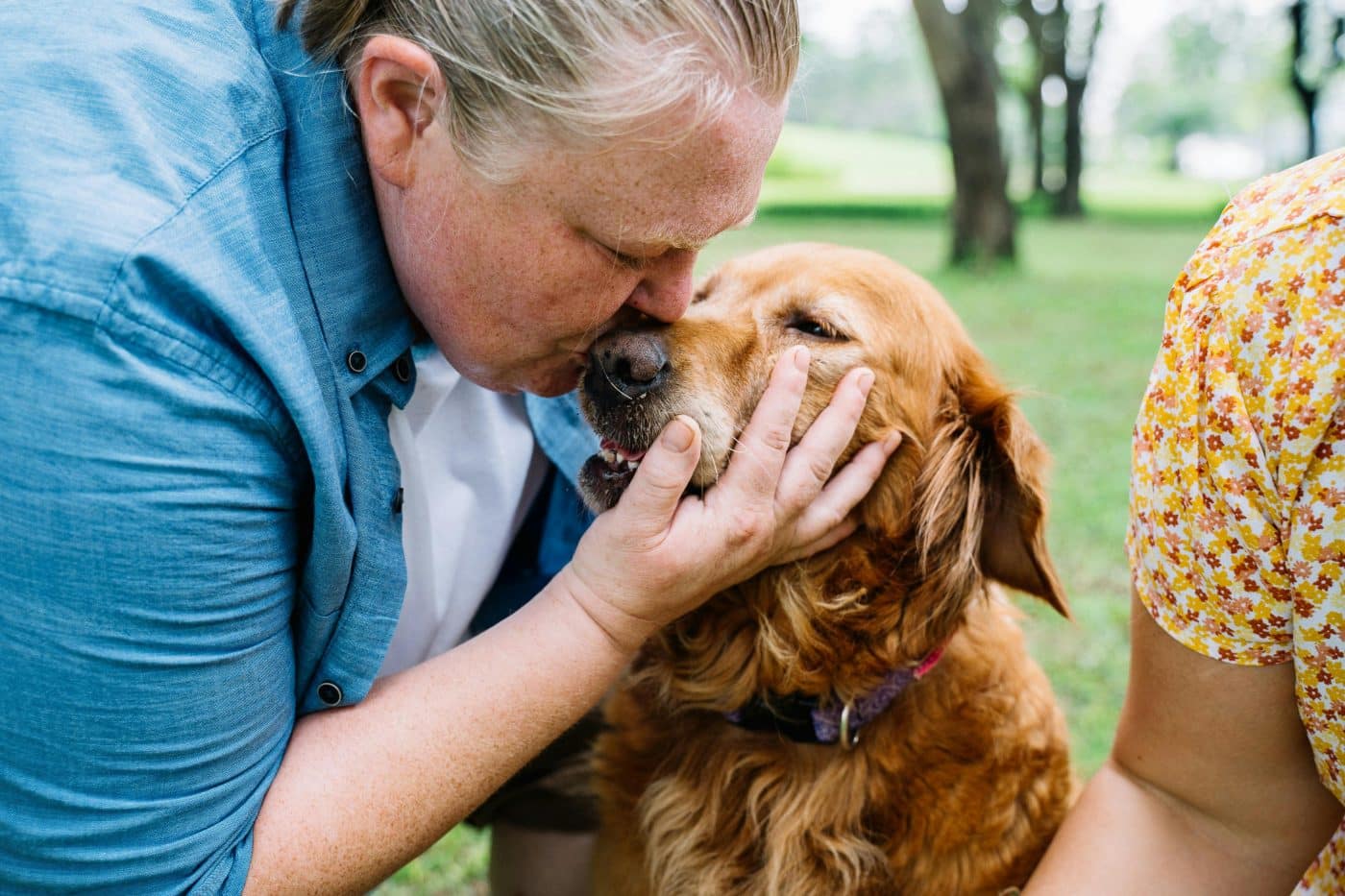 Shutterstock
Shutterstock
Dogs have long been known as man’s best friend, but their intelligence is often overlooked in favor of their loyalty and playfulness. In reality, dogs possess remarkable mental abilities that go beyond simple tricks. Whether it’s solving problems, understanding human emotions, or even detecting diseases, dogs are much smarter than we realize. This article explores 13 surprising facts about dog intelligence, revealing how dogs’ cognitive skills surpass common assumptions. Understanding these lesser-known aspects can help strengthen the bond between us and our brilliant, furry companions.
Dogs Can Count (Kind Of)
 Shutterstock
Shutterstock
While you might not catch your dog calculating the tip at a restaurant, they do have an impressive sense of numbers. Studies show that dogs can understand quantities to a basic degree. For example, they are capable of distinguishing between more and fewer objects, which comes in handy when they’re trying to decide which treat to go for. One experiment showed that dogs could choose the dish with the greater number of pieces of food, demonstrating an ability to understand the concept of quantity. So while they may not be ready for a game of math trivia, they certainly know when they’ve been shortchanged on snacks!
Dogs Can Read Human Facial Expressions
 Shutterstock
Shutterstock
Dogs are known for their emotional intelligence, and their ability to understand human facial expressions is one of the clearest signs of this. Studies have shown that dogs can interpret human emotions by looking at our faces. They are particularly adept at recognizing whether we’re happy, sad, or angry, and they adjust their behavior accordingly. This is why your dog might wag its tail when you’re smiling but act more reserved if you’re frowning or upset. It’s not just about reacting to your voice tone – they’re closely observing your face and body language to gauge how you’re feeling.
Dogs Understand Human Pointing
 Shutterstock
Shutterstock
Humans naturally communicate through gestures, and dogs have learned to interpret them with impressive accuracy. One of the simplest gestures dogs understand is pointing. Research shows that dogs can follow a human’s pointing finger to locate hidden objects or navigate to a specific area. This skill, which requires an understanding of both the human’s intention and the direction of the gesture, is not universal among animals – some species, like wolves, have difficulty interpreting human gestures, making dogs particularly unique in their social cognition.
Dogs Have Short-Term Memory
 Shutterstock
Shutterstock
Dog owners often joke about how their pets seem to forget things almost instantly, and there’s some truth to this. Dogs have relatively poor short-term memory compared to humans, which means they might forget a recent event after just a few minutes. However, their long-term memory is much more reliable. If a dog has a positive or negative experience with something – like a certain person, place, or object – it can remember that experience for years. So while your dog might forget where it left its favorite ball, it will remember the sound of the doorbell signaling a walk.
Dogs Have an Incredible Sense of Smell
 Shutterstock
Shutterstock
A dog’s sense of smell is far more advanced than anything humans could ever imagine. It’s not just about sniffing out food or finding a lost toy; dogs can detect diseases, such as cancer or diabetes, by smelling changes in the body. This incredible olfactory ability comes from having about 300 million smell receptors in their noses, compared to the 5-6 million that humans have. It’s estimated that a dog’s sense of smell is 40 times more powerful than ours, allowing them to pick up on scents that we can’t even detect. This extraordinary ability has made dogs valuable assets in law enforcement, search-and-rescue missions, and even medical diagnoses.
Dogs Can Learn Hundreds of Words
 Shutterstock
Shutterstock
Dogs may not speak our language, but they can learn to recognize an impressive number of words and commands. On average, dogs can understand between 150 and 200 words, with some breeds, like Border Collies, capable of learning up to 1,000 words. This means your dog could learn to fetch your slippers, identify specific toys, or even recognize the names of other pets in the house. The more you communicate with your dog using consistent language, the more words they can learn – and not just simple commands, but also the names of objects, people, and locations.
Dogs Can Solve Puzzles
 Shutterstock
Shutterstock
Dogs are problem-solvers, and many of them enjoy puzzles that challenge their cognitive abilities. Whether it’s figuring out how to open a door, retrieve a hidden toy, or solve a puzzle box to get a treat, dogs have the capacity for abstract thinking. Puzzle toys, which are designed to test a dog’s ability to manipulate objects or follow steps to access a reward, are a great way to keep their minds sharp. Dogs who engage with these challenges often show an impressive level of perseverance, creativity, and logical thinking – qualities often associated with human intelligence.
Dogs Can Tell Time (Sort Of)
 Shutterstock
Shutterstock
While your dog might not be able to read a clock, research has shown that dogs can sense the passage of time to some extent. They’re particularly attuned to routines and patterns, which is why they may start to get excited or anxious around the time you typically return home. Dogs rely on their internal biological clocks, which are influenced by light, sounds, and daily routines, to gauge when certain events are about to happen. Although their understanding of time is more sensory-based than a human’s, many dogs are excellent at predicting events like meals, walks, or playtime.
Dogs Have a Theory of Mind
 Shutterstock
Shutterstock
The concept of “theory of mind” refers to the ability to understand that other individuals have thoughts, feelings, and perspectives that differ from one’s own. While this is a sophisticated cognitive trait typically associated with humans, dogs also possess a version of it. For example, a dog may understand that if you’re looking in one direction, it can steal a treat without you noticing. They can recognize that you have knowledge or awareness of something that they don’t, and they may use this to their advantage. This awareness of another’s mental state showcases an impressive level of social cognition.
Dogs Have an Exceptional Memory for People
 Shutterstock
Shutterstock
Dogs form strong bonds with people, and their memories of us are incredibly long-lasting. Research suggests that dogs can remember people for years, even if they haven’t seen them for a long time. This ability to retain the memory of a specific person is partly due to their acute sense of smell, which helps them recognize familiar scents. It’s why your dog can remember a friend or family member who hasn’t visited in years. If you’ve had a meaningful relationship with a dog, chances are they’ll remember you even if you’re separated for a while.
Dogs Can Feel Empathy
 Shutterstock
Shutterstock
Empathy, or the ability to feel and understand another’s emotions, is often thought to be a uniquely human trait. However, many dog owners will attest that their dogs seem to understand when they’re sad or anxious, offering comfort through physical closeness or even licking away their tears. Research supports this, showing that dogs are highly attuned to human emotions. They can respond to emotional cues, and in some cases, dogs will adjust their behavior to soothe or comfort their owners. This empathy is particularly evident in therapy dogs, who are trained to provide emotional support to people in distress.
Dogs Can Understand Abstract Concepts
 Shutterstock
Shutterstock
Dogs are not only good at learning concrete commands, but they also can understand more abstract concepts. Studies have shown that dogs can grasp basic concepts like “same” and “different.” In experiments, dogs were able to distinguish between two objects based on their shape or color, even when the objects were unfamiliar. This demonstrates that dogs aren’t just reacting to their immediate environment – they are processing abstract ideas and applying them to new situations.
Your Dog Knows When You’re Lying
 Shutterstock
Shutterstock
Dogs have an uncanny ability to sense when something isn’t quite right – even when you’re not speaking. Studies have shown that dogs can detect changes in our behavior and energy levels, which might indicate that we’re lying. If you act unusually calm or tense, a dog might pick up on these inconsistencies and react accordingly. Their acute sense of smell and ability to read body language help them spot discrepancies, making them excellent judges of character. So, don’t think you can fool your dog – they’re onto you!
The Bark Side Of Brilliance
 Shutterstock
Shutterstock
Dogs aren’t just furry companions; they’re clever minds in disguise. From solving puzzles to reading our emotions, their intelligence matches their playful nature. So, the next time your dog steals your socks or seems to know when you’re about to leave, remember—they’re not just being mischievous. They’re showing off their smarts. With all their unique abilities, dogs truly are the unsung geniuses of the animal kingdom. We’re lucky to have them around, proving time and again how intelligent and extraordinary they are.
 Toledo, United States.
Toledo, United States.